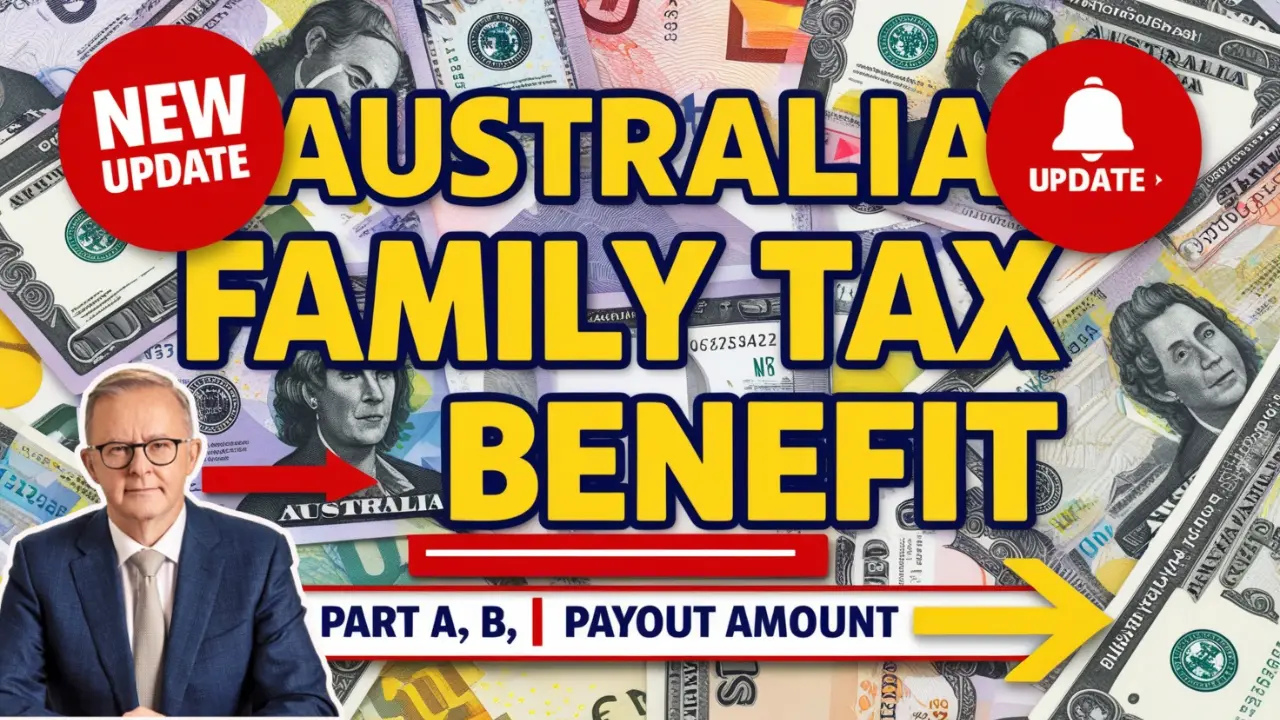The Family Tax Benefit (FTB) in Australia provides essential financial help to families raising children. Designed to ease the financial burden, it supports eligible families with FTB Part A and FTB Part B, which are based on family income, the number of children, and their ages. In 2024, the government continues to offer these benefits, with updated eligibility rules, payment amounts, and important dates for families to be aware of.
This guide will break down everything parents need to understand about FTB Part A and Part B, how to apply, the amounts you might receive, and the key dates you should keep in mind to make the most of this support.
What Is the Family Tax Benefit?
The Family Tax Benefit (FTB) assists families with children under 16, or up to 20 years old if they are in full-time study. The benefit is made up of two parts:
- FTB Part A: Helps families with children aged 16 or under (or 20 if in full-time study).
- FTB Part B: Provides extra help to single-parent families or those with only one main income earner.
In 2024, both parts of the FTB are available based on family income, the number of children in the household, and their ages. You can apply for FTB through Centrelink or MyGov, and payments are typically made either fortnightly or as a lump sum at the end of the financial year.
Family Tax Benefit Part A: Support for Families with Children
FTB Part A is designed to provide financial support to families with dependent children. The benefit is income-tested, meaning the amount you receive depends on your family’s taxable income. Lower-income families generally receive more financial assistance, while higher-income families may see reduced payments.
Key Details:
- Who qualifies: Families with children under 16, or 20 if they are in full-time study.
- Payment amounts: The benefit can be up to $8,000 per child per year, depending on income. Families with multiple children can receive higher payouts.
- How it’s paid: Payments are usually made fortnightly or can be received as a lump sum at the end of the financial year.
Family Tax Benefit Part B: Extra Help for Single-Income Families
FTB Part B is aimed at single-parent families or families where there is only one primary income earner. This part of the benefit provides additional assistance for families with children under 13 years old, and it’s designed to support parents who have limited earning capacity.
Key Details:
- Who qualifies: Single-parent families or families with one primary income earner.
- Payment amounts: The maximum amount for FTB Part B is around $1,500 per child per year, depending on your income.
- Who benefits: It’s particularly beneficial for families where one parent is not earning or is earning below the eligibility threshold.
How Much Can You Receive in 2024?
The amount of financial assistance you can receive from the Family Tax Benefit in 2024 depends on several factors, including your family income, the number of children, and their ages. Here’s an overview:
FTB Part A Payout Example:
- One child under 13: Up to $8,000 per year (paid in fortnightly installments or as a lump sum).
- Multiple children: You’ll receive additional payments based on income and the number of children you have. Families with lower incomes receive more, while higher-income families may see reduced payments.
FTB Part B Payout Example:
- Flat payment of up to $1,500 per child per year, based on your family income and whether your child is under 13.
Eligibility for Family Tax Benefit in 2024
Eligibility for the Family Tax Benefit is determined by your family income and the number of children in your care. Below are the basic requirements for both FTB Part A and FTB Part B:
Eligibility for FTB Part A:
- Income: Your family’s income must fall within the designated income limits for FTB Part A.
- Children: You must have dependent children under 16 or up to 20 if they are in full-time study.
- Residency: You need to be living in Australia and meet the residency criteria.
- Care arrangements: The child must be in your care for at least 35% of the time, though shared care arrangements may apply in some cases.
Eligibility for FTB Part B:
- Income: For single parents, income must be under a specified threshold. For couples, only the primary income earner’s income is counted.
- Family structure: You must be a single parent or a couple with one primary income earner.
- Child’s age: The child must be under 13.
- Residency: You must meet Australian residency requirements.
How to Apply for the Family Tax Benefit
To apply for FTB Part A and Part B, follow these steps:
- Create or log into your MyGov account: Link it to Centrelink for easy access.
- Submit your application: You can apply online through the MyGov portal or visit your local Centrelink office.
- Provide required documentation: Include proof of your family’s income, children’s ages, and your Australian residency status.
- Keep your information updated: Make sure your family details are up-to-date in the Centrelink system for accurate payments.
Key Dates and Payment Schedule
Payments for Family Tax Benefit are usually made fortnightly, though you can choose to receive your payments as a lump sum at the end of the financial year. To stay informed on exact payment dates and any changes, check the Services Australia website for updates.
Final Thoughts
The Family Tax Benefit is a valuable financial resource for families with children, helping reduce the cost of raising kids. With different support options available through FTB Part A and FTB Part B, there are benefits for both low- and middle-income families, single parents, and those with a primary income earner. Be sure to check the Services Australia website for further details on amounts, eligibility, and payment dates to make sure your family gets the support it deserves.



